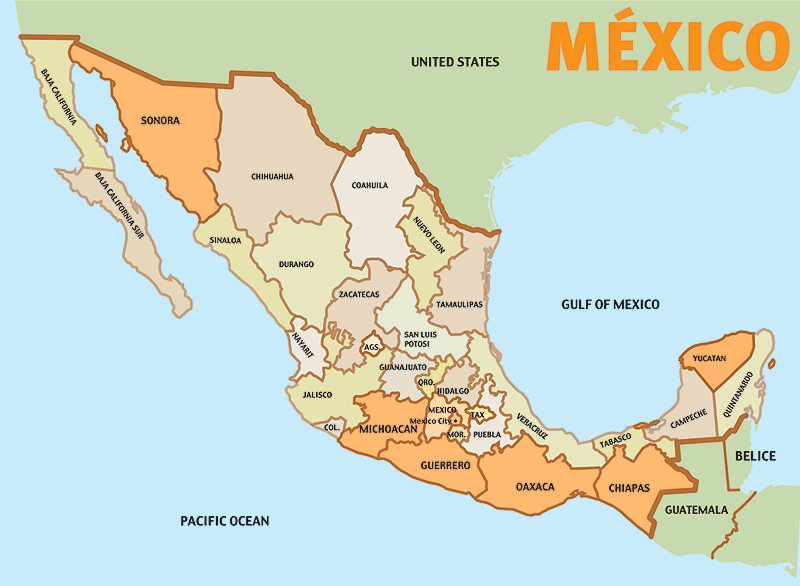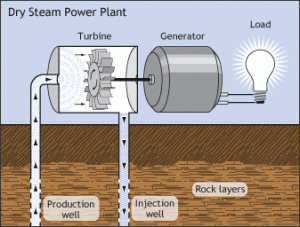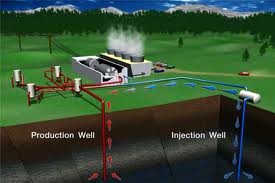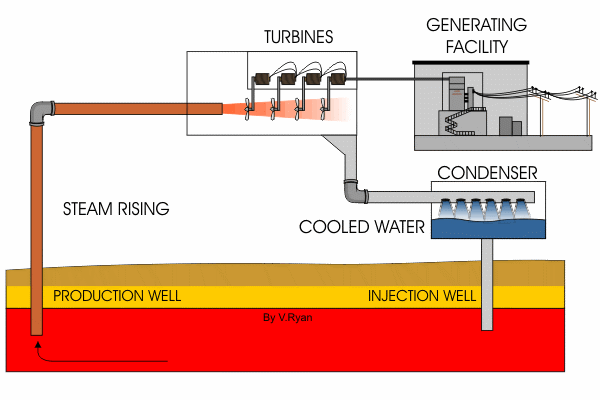Objectives
The purpose of the study is to provide engineering solutions to a particular community. It is to determine if a community’s development plan to establish a renewable source of electrical power can be established and maintained even if the village is located far away from government power lines. This study aims to survey a geothermal resource that is said to be near a hamlet called Jora. This hamlet is located in Southwest Mexico. The proponents of this study hope to submit a proposal to build a geothermal power plant that will work along side with diesel generators currently in place. However, the ultimate goal is to replace these generators so that the inhabitants of Jora will have access to clean, renewable, and more cost-efficient electrical energy source.
Introduction
It has been reported that there are close to 2 billion people that have no access to modern energy services (Balakrishnan 2006, p.190). This means that there are people living in remote places that cannot use electrical appliances and office equipment.
These appliances and equipment can easily change their lives for the better. This is true even in industrialised countries such as Mexico. In this country, four percent of the population does not have access to electric service (Sanchez-Velasco et al., 2003, p.67). These people live in small hamlets and villages with less than 200 inhabitants and located far away from electrical transmission lines (Sanchez-Velasco, 2003, p.67). Nevertheless, it was discovered that aside from the use of diesel generators, there are places in Southwest Mexico that can utilize the presence of geothermal energy resource.
Geothermal energy is a renewable energy source. It is a type of natural resource, wherein the energy “comes from radioactive decay in the core of the Earth, which heats the Earth from the inside out as well as from the Sun which heats the Earth from the outside in” (Balakrishnan, 2006, p.192). According to scientists, “Geothermal heat pump systems are the most energy efficient, environmentally clean, and cost effective space conditioning systems available” (Fridleifsson, 2001, p.1). There are other specialists who remarked that ‘‘with learning by doing and innovative technology… cost can be reduced even further’’ (Malloy 2010, p. 32). This simply means that it is not impossible for a village to get the necessary help from the government and work on establishing a small-scale geothermal power plant in the area.
Village Profile
Jora is located in the Southwest State of Mexico. It is a hamlet with 600 inhabitants. It is a considerable distance from the nearest transmission lines, about 75 kilometres from the nearest electrical grid. As a result the village can only have electrical power for a few hours everyday through the use of diesel generators. A diesel generator burns fossil fuel. It is noisy and a source of pollution in the village. Aside from that, the cost drains the financial resources of the people.

The village may be in a remote location; however, there is a geothermal energy source nearby. Engineers can drill into a site where hot gases are being released due to the pressure that is building up within. This will result in the creation of a system wherein water can be pumped into it to produce steam power to move the turbine of a generator. The establishment of a geothermal power plant is the best option to consider when it comes to providing electricity for this village.
Scope of Work
A review of related literature will be conducted in order to deepen the team’s understanding of geothermal power plants. Everything about renewable energy sources and alternative energy sources must be studied in order to present a clear recommendation to authorities that diesel generators are not only cost-effective but also a threat to the environment and the health of the residents. Research will have to be conducted with regards to all pertinent information about the village. It is imperative to know more about the geography as well as the culture of the people living there. A final report containing social, technical, environmental, and financial data will be completed at the end of the study period.
Study Schedule
A team will be sent to assess the feasibility of establishing a geothermal plant for the people of Jora. Before the on-site visit, the team will have to refresh their understanding of how a geothermal plant works. The team will also have to do a background study of recent technological advances in the construction of geothermal heat pump systems.
When on site, the team will have to gather information with regards to the geothermal resources in Jora. They team will find out if there is enough capacity to supply a steady stream of electrical power for the village. The team will also have to determine the environmental impact of the said geothermal plant and if it is sustainable in the long run.
Project Preparation
A trip to Mexico was conducted for this study. Before that the committee in-charge of the project will have to choose the right people who will comprise the team. After completing this stage, the team will be briefed about the project. They will learn the contact person in Jora as well as the local government overseeing that particular hamlet. The team will learn what to say and do with respect to gathering information as well as establishing relationships that will be needed if and when the geothermal project will push through.
Preliminary information gathered revealed that it is best to give a one year time frame for this project. The first few months will be allocated for research and further investigation into the technical aspects of geothermal plant design as well as the political and social aspect of the endeavour. The remaining time will be used to prepare the people, build the plant, and then maintain it and determine if it is indeed cost-efficient to have a geothermal plant in conjunction with the diesel generators. In the same period the team will have to make a recommendation for the total removal of diesel generators in Jora.
The cost of the project is estimated to reach at least AU$ 2 million. Finally, the team will have to make a report that serves also as a proposal to the World Bank in order for the said international funding agency to work in partnership with the local government of Southwest Mexico. This will help in financing the geothermal plant project. In the said report the team will have to explain how the project will be funded and if the community is expected to help in paying for it or providing services that will serve as payment in kind.
Current Obstacles and Challenges
Compared to the past years it is now more difficult to secure a loan from institutions like the World Bank. This may be due to the failures of projects in the past that has prompted the World Bank to be more cautious when it comes to releasing funds.
The second major obstacle is site access. Jora is located in an area that is least developed in all of Mexico. The government infrastructure is at best poorly maintained an in other areas the steep incline and the rough roads can easily discourage even the experienced drivers. This can easily slow down the project and the estimated one year time given from start to finish may not be enough.

The third major concern is the complexity of the drilling requirements. In the preliminary investigation it was discovered that drilling has to be done in a self-contained rig (Malloy, 2010, p.133). This is due to the fact that a normal truck’s height may not be enough clearing to install all the necessary equipment and thus there is a need to mount the truck on a platform (Sanchez-Velasco, 2003, p.69). There is no need to elaborate on the fact that this is a risky endeavour.
The high risk involved brings the discussion to the fourth and final concern which is the need for qualified workers. It is imperative to ‘‘Educate and train local communities for the sustainability of renewable energy projects.’’(Balakrishnan 2006, p.190). The demand for qualified workers may stretch the budget to its limits because it is highly unlikely that all the qualified workers can be sourced out within the region. Most probably skilled workers will have to be brought in as far as Mexico City or even the United States.
Geothermal Power Plant Construction
The construction of the power plant will require at least three months to complete. Teams of workers will have to be brought on site and necessary preparation such as the construction of living quarters has to be met beforehand. Provisions have to be made with regards to the transport of the heavy equipment. Logistics has to be covered with regards to power plant turbine, generator, heat exchanger, and condenser (Sanchez-Velasco, year, p.69). This has to be mounted and installed. It has to be monitored and tested by qualified personnel before turnover to the village.

Project Process
Geothermal power is released when the intense heat buried deep within the surface of the earth is accessed. The engineers will drill deep into the ground. Afterwards water is pumped into these holes in order for the water to come in contact with the hot rocks. As a result water is transformed to steam. The steam in turn will rise up rapidly and turn the turbine in the power plant.
The turbine is attached to a magnet and the movement of the shaft causes the generator to release electrical energy. This form of energy is “transformed to electrical power and harnessed by the geothermal plant” (DigtheHeat, 2011, p.1). The same electrical power is distributed for use to the village.
In simple geothermal power plants, “the low pressure steam output from the turbine is released into the atmosphere” (DigtheHeat, 2011, p.1). But with recent design specifications, the steam is no longer allowed to escape to the atmosphere and instead it is diverted to a condenser where it is converted to water. This improvement in design helps to improve “the efficiency of the turbine and avoids the environmental problems that will result from the direct release of steam into the atmosphere” (DigtheHeat, 2011, p.1). In addition, “the waste water is then re-injected into the ground with re-injection wells” (DigtheHeat, 2011, p.1).

Table 1. Costs of the Jora Village.
Power Geothermal Project
Activity/Part Cost (AUD$)
It is clear from the above-mentioned values that the bulk of the expense goes to the materials and equipment needed to construct the geothermal power plant. But it is also interesting to note that a chemical called Isopentane contributes to the high-cost of maintaining a geothermal power plant. This should prompt the project leaders to educate the people of Jora regarding the need to help in paying for maintenance cost.
Project Benefits
Fossil fuels are expensive and cause pollution. It is a financial burden for the people of Jora. It is therefore a welcome relief for them to have an alternative energy source that is cost-efficient as well as clean (Berger,1997,p.5). The availability of a dependable energy source will give them opportunities that they never had before.
The presence of the geothermal power plant will give them business opportunities (Chambers,2003, p.7). They can utilise their labour force to create a small-scale clothing factory. They can sell the products to neighbouring towns and cities. In this manner they can increase the productivity of the village.
Conclusion
The importance of having an alternative energy source can never be stressed enough in an age where fossil fuels are know to be very expensive to refine and transport. Villages located in remote places find it difficult to sustain a lifestyle with electric power and yet at the same time dependent on fossil fuel such as diesel generators. The establishment of geothermal power plant in Jora Village in Southwest Mexico will be greeted with enthusiasm by the people because this is not only an alternative energy source but one that is powered by renewable energy. Heat coming from deep within the earth is virtually inexhaustible and this means that the people of Jora can now access a cost-efficient energy source. This also means that they will be able to have opportunities that will bring prosperity to the village.
References
Balakrishnan, J. (2006) Renewable energy and distributed generation in rural villages. First International Conference.
Berger, J. (1997) Charging ahead: the business of renewable energy and what it means for America. CA, University of California Press.
Chambers, A. (2003) Renewable energy in nontechnical language. Tulsa, OK, PenWell Books.
DigtheHeat. (2011) Dig the Heat Geothermal Energy. Web.
Fridleifsson, I.B. (2001) Geothermal energy for the benefit of the people. Renewable and Sustainable Energy Reviews, 5 (3), 299-312.
Guggenheim, S. (2010) Crises and Contradictions: Understanding the origins of a community Development Project in Indonesia. Web.
Jason, S. (2009) Alternative & Renewable Energy: What About Geothermal Power? Web.
Malloy, C. (2010) Geothermal energy: the resource under our feet. New York, Nova Science.
Sanchez-Velasco et al. (2003) New CFE geothermal village power plant in Mexico bestows local residents with prosperity – and children with ice cream. International Geothermal Development.